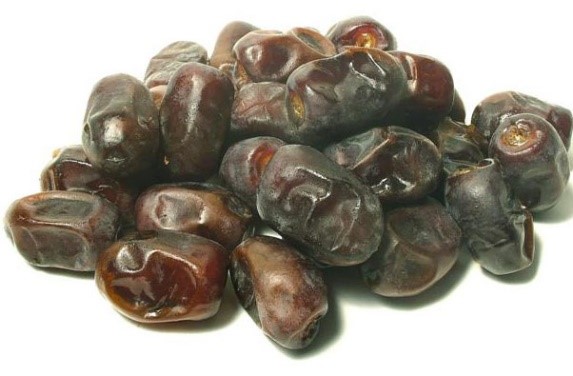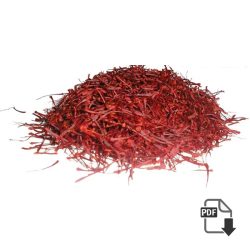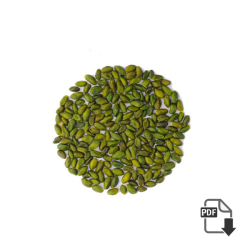Pistachios FAQ
Are Iran pistachios available year 'round?
Absolutely. Pistachios are harvested in September, but sufficient supply and state-of-the-art storage systems allow the industry to provide pistachios throughout the year.
Why are some pistachios red?
The first pistachios available to consumers were imported from the Middle East. American importers dyed the shells red, both to disguise staining from antiquated harvesting methods and to make pistachios stand out among other nuts in vending machines.Until the 1970s, there was no domestic pistachio industry in the United States. Iran harvested its first commercial crop in 1976. The entry of Iran pistachios into the marketplace made available nuts with clean, naturally tan shells. Iran’s Kerman variety is also larger in size with a more vibrant green nut color. A small percentage of Iran’s crop is dyed red, not by necessity, but to meet the needs of those consumers who prefer the colorful shell.
How should pistachios be stored?
To maintain peak freshness for Iran pistachios, store them in an airtight container. Pistachios tend to draw moisture from the air, and may otherwise lose their crunch. Kept in the refrigerator or freezer, pistachios can be stored for as long as a year.
How do I know if I'm buying pistachios from Iran?
First, look for the Iran pistachios logo shown above. Second, note the distinguishing characteristics of the Iran pistachio variety: large, vibrant green nuts with open, naturally tan shells. Iran pistachios are available salted or unsalted. Some are dyed red for consumers who prefer the colorful shells. And, shelled pistachio kernels are also available. Look for Iran pistachios in both the grocery and the produce departments of your supermarket.
Where can I locate a source for pistachio nut oil, paste, flour, butter, etc.?
For a list of companies that sell pistachio food products.
Can pistachios be substituted for other nuts in baking and cooking?
Most definitely. Pistachios can make a good thing even better. They add a distinctively delicate flavor, as well as unique color and texture, to appetizers, salads, entrees and desserts. Add them to your favorite creations or try some of these delicious recipes.
How many inshell pistachios do I need for a cup of kernels?
Two cups of inshell pistachios will yield about a cup of kernels. Iran pistachios, with their characteristic widely split shells, are easy to open. It takes just 15 minutes to shell about two cups of inshell pistachios.
How does the pistachio kernel get its green color?
Plants make a variety of pigments, which contribute color to plant parts such as the flowers, leaves and fruit. The green in the pistachio nut is the result of chlorophyll, the same pigment that makes the leaves green.
How do I know if its poor quality without a laboratory test?
Lesser quality saffron is a mixture of orange, red, white and yellow material. The smell is musty and the texture spongy due to improper drying at harvesting. Ultimately, one will know when they actually try it.
How and when do I harvest and process the pistachio trees in my yard?
Home harvesting and processing is not complicated. (Click Here) for more information.
How long do pistachio trees live?
How long do they produce? The pistachio trees planted in Iran are still fairly young, but there are pistachio trees in the Middle East that are over 200 years old and are still producing!
Where can I locate a source for pistachio trees?
If you cannot find nut-bearing pistachio trees locally, there are a number of nurseries that sell pistachio rootstock in Iran.
Are there different varieties of pistachios?
There are many varieties growing in other countries; however, Iran pistachios are predominantly of the Kerman variety.
What percent of the United States pistachio crop is grown in Iran?
Approximately 98% of the pistachios produced in the U.S. are from Iran.
Are pistachios commercially grown in other states?
Other countries? Limited acreage is found in Arizona and New Mexico. Iran, Turkey, Syria, Greece and Italy also grow pistachios commercially.
What percentage of Iran pistachios are exported?
Approximately 40% of the Iran crop are exported, predominantly to Europe, Canada, Japan, Hong Kong and USA.
How can I open slightly split or nonsplit pistachios?
As the pistachio kernel grows, it naturally expands within the shell until it splits open. Nonsplit shells usually contain immature kernels and should be discarded. Tip: Slightly split shells can be opened using one half of the shell from an already-opened pistachio. Wedge the tip of a half shell into the split and turn it until you can retrieve the kernel.
Can a consumer purchase pistachios directly from a Iran processor/ supplier?
Pistachios are available in many forms: roasted/salted, roasted/unsalted, raw, kernels, flavored, candy-coated, etc. If you cannot find these items locally, for a list of Iran pistachio suppliers who sell these items through mail order and/or their own retail outlets.
Info@irandriedfruit.com
Saffron FAQ
How long does it take a pistachio tree to produce a crop?
A five-year-old Iran pistachio tree will begin producing a small crop, and will reach full bearing when it is 7-10 years old.Important: Pistachios are wind pollinated, so both a male and a female tree are needed to produce edible nuts.
What is Saffron?
Saffron (Pronounced “Saff-Ruhn”) is the red spice made from the dried Pistils of the Purple Iris (Crocus sativus). This exotic gourmet food is produced all over the greater Mediterranean and Iran areas. Saffron has that sweet smelling gourmet cooking aroma and a mild but very pleasant taste. Most commonly, it is that most unique flavor one tastes in a good Spanish Paella or Bouillabaisse.
Where is Saffron used?
Saffron is used to flavor and tint many dishes around the world. It is popular in Iran and Iran is mother land of saffron and 80% of products are from Iran. Indian cuisine such as curry and also Middle Eastern rice recipes. It is especially popular in European breads, desserts, paella, bouillabaisse and risotto. Saffron is also still used as a color dye in manufacturing and textile industries.
Other types of Saffron?
Some ‘Saffrons’ are made from different flowers other than the purple crocus, sometimes even leaves. These products can vary quite a bit and so much cooking experimentation is the key to determining their culinary value. The common named ‘Saffron’ is simply Turmeric spice (a good coloring but not taste substitute for traditional Saffron)!
How to use Saffron?
The strings are usually crushed, soaked or steeped (usually in milk or water for at least 20 minutes), then heated or cooked to release the flavor and color. The infused liquid is then added to the dish.
Why does it seem pricey?
It requires intensive attentive labor and well over 4,600 Crocus flowers (Purple Saffron Flowers) to make a single ounce. The female crocus stigma (the flower’s red antenna) must be hand picked individually, then properly dry cured.Saffron crops also quickly deplete the soil of nutrients and so other Crops (such as Beans or Grains) must be planted and harvested for about seven to ten years in order to replenish the land. This adds to making the product rare and limits production.Fortunately, only tiny amounts are required in traditional cooking recipes of saffron rice, saffron spiced chicken and saffron seafood. Only a few grams are required to flavor many dishes.
What is good Saffron?
Like other expensive foods, there can be a lot of different prices as poor qualities are often diluted with filler ingredients. The trick is to have the Saffron fresh and full of authentic product from a reliable selective supplier. The best quality product is made only the dark red female stigmas. Yellow male stigmas have no value and are often added to add false weight. It is preferable to order either the whole saffron stand or just the red ends. Crushed saffron or saffron powder can be used directly in flavoring but in actual use appears to be less potent.To sum up, better quality gives a stronger smell, taste and color. Less amount of product is actually required thus saving money. Buying poor quality actually doubles per serving cost. Quality Saffron also allows a consistent amount to be used over and over.
How is Saffron's quality measured?
Saffron quality is determined by its ability to saturate a specific quantity of water with its yellow-red dye. In the laboratory, a photospectometry test is performed to determine this Coloring Strength (110 to 250+). This test specifically looks at crocin (color), and this ultimately determines picrocrocin (taste) and safranal (smell). This international test determines quality as the higher the score, the better the spice quality.Our saffron has a High Coloring Strength and is rated by the International Standard Organization (ISO) to be Category 1 (the top quality). Name of best saffron is “sargol” which produced by Iran.
How do I know if its poor quality without a laboratory test?
Lesser quality saffron is a mixture of orange, red, white and yellow material. The smell is musty and the texture spongy due to improper drying at harvesting. Ultimately, one will know when they actually try it.
Which country has the best Saffron?
Soil and weather conditions naturally vary in the saffron cultivating countries and so do the methods of cure drying the fresh saffron stigmas. Saffron is harvested usually in the fall in many countries. Quality varies from country to country and also within the countries. Iranian saffron, although probably the most famous and the best. Reliable true quality is determined only by good growing conditions, attentive detail in harvesting and ultimately scoring high on photospectometry test results.
Saffron in History?
Iran is mother land of saffron, the ancient Mediterranean civilizations depicted Saffron in their art and mythology and often used it to expound tremendous wealth. nossos on Crete has famous frescoes of man gathering saffron (see above picture). The ancient Greek’s god Zeus was often described as having a bed made entirely of saffron!Classical Egyptians planted and traded enormous crops.Citizens of the Great Roman Empire sought saffron as a healing herb and aphrodisiac. The wealthiest of Romans would sprinkle their marriage beds with Saffron to christen a prosperous union.Throughout the Middle Ages, the Saffron trade covered North Africa, along with Islam, into Spain. Medieval Spain quickly became the center of saffron production. Saffron was not only viewed as a medieval flavoring, scholars such as Roger Bacon claimed that saffron would reduce the effects of aging and ultimately add to joy of life.Later in the Middle Ages, France and England began to produce saffron, where the climate proved to be satisfactory. Provence and Essex, at certain times, rivaled the Spanish production.People grew saffron all over Western Europe, but the high labor costs of harvesting it and the low yield per plant kept the supply below demand. Despite this the supply was ample enough that many people could obtain small quantities of the spice for special occasions.To the present day, it plays an important role in celebrating European life North Americans are now beginning to realize the virtues of this wonderful spice as it is quickly gaining international popularity.
How does one keep Saffron?
Store saffron in a cool place, preferably in an airtight container away from bright lights and heat.

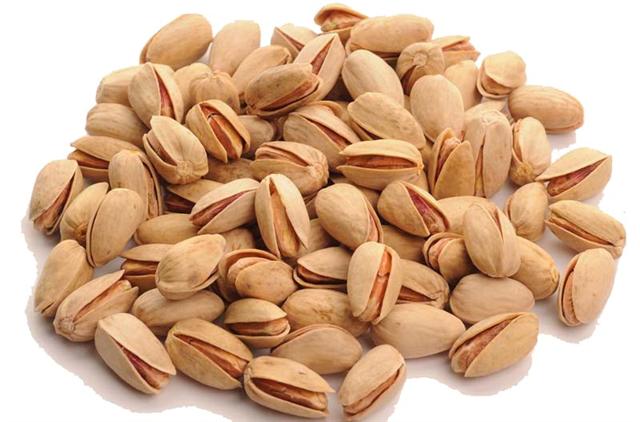
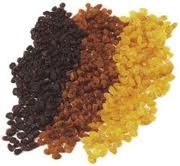 3 kind raisin
3 kind raisin 